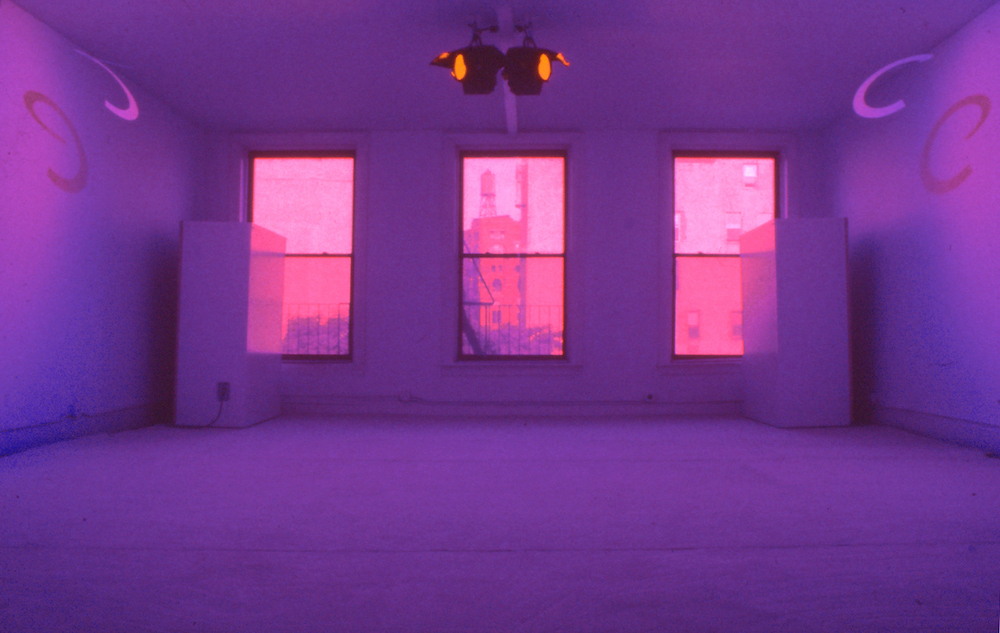[ad_1]
A sanctuary for followers of avant-garde sound and installation art with roots dating back to the 1970s, Dream House—an immersive experience unlike any other in New York—is in danger of closing over “financial needs [that] have become overwhelmingly desperate.” As described further in a GoFundMe campaign launched this week, artists La Monte Young and Marian Zazeela—and the MELA Foundation through which they administer Dream House with director and close collaborator Jung Hee Choi—owe $150,000 in back rent on the space they have occupied for nearly 60 years in Lower Manhattan.
The three floors in a Tribeca walkup serve as Young and Zazeela’s residence as well as storage space for extensive archives and the home of Dream House itself: an open environment covered with white carpet and pillows scattered about in the midst of a never-ending microtonal electronic-music composition and an atmosphere suffused with magenta light. To experience it, visitors buzz at the door on the street below, climb up to the entryway, and—after removing their shoes—enter into a realm where distinctions between waking life and dreaming life can be hard to discern.
The GoFundMe campaign is an attempt to raise the $150,000 owed for the sake of continuing in the future. “We have reached a critical point,” the campaign reads, “and we cannot continue without paying rent to the landlord; and yet, there is no way we can move out of this building. All of our work, history and future are here. We must cry out to the world to help us.”
Of the present circumstances, Young—on the phone from home—told ARTnews, “Artists tend to live like this their entire lives. Artists are always without the funding they need, especially artists who do radical or very specialized work. Something about the nature of the seriousness of art and the fact that it’s not necessarily involved with public success [makes for] a very sophisticated situation.”
The current Dream House installation has been a mainstay on Church Street since 1993, when it opened as a different iteration of an earlier Dream House supported by the Dia Art Foundation from 1979 to 1985. Though Dia acquired a separate iteration of the work that was presented in the Chelsea gallery district in 2015, the Church Street Dream House has been overseen by the MELA Foundation since its beginning.
Young and Zazeela first moved into the building in 1963 and have amassed extensive archival holdings related to their own work as well as that of fellow musicians (including Terry Jennings, Richard Maxfield, and Pandit Pran Nath) and artists involved with the interdisciplinary Fluxus movement. “It includes music and various physical manifestations of sound and light—it’s enormous,” Young said of a little-accessed collection that Choi described as comprising “ephemera, project files, actual artworks, audio and video tapes, and very well documented records” related to some of the 20th century’s most exploratory artists.
The future of all that—as well as the continued operation of the Dream House and related concert programming there—is now in jeopardy as debt mounts. “The last few years we’ve been struggling, but the pandemic has brought more severe financial crisis,” Choi said. “We had to [temporarily] close the Dream House, and we had to cancel our concerts and presentations outside the MELA Foundation in Europe. We are financially destitute, and as we owe so much rent, other aspects of the financial situation also suffer.”
Both Young and Choi described the rental arrangement the MELA Foundation’s building as more accommodating than most. “It’s important to emphasize our landlord’s generosity,” Young said. But the reality of real-estate has made their situation increasingly dire. “We cannot blame the landlord,” Choi said. “In New York City, no other landlord would have so much patience.”

Courtesy MELA Foundation
Jessica Morgan, the director of Dia Art Foundation, said that support for Young and Zazeela is important for the artists themselves as well as the kind of work they’ve done. “It’s incredibly important to us that the Dream House continue to exist,” Morgan said, “and we’ve been trying to do everything we possibly can with La Monte and Marian.” Current and forthcoming projects with Dia include an exhibition of Zazeela’s drawings now on long-term view at Dia:Beacon in upstate New York and a planned vinyl-record set devoted to Young’s epochal 1958 Minimalist composition Trio for Strings—a notable new release for an artist whose recordings have historically been hard to come by.
“Unfortunately people do not realize how significant he is,” Morgan said of Young. “Some people do, of course, but not all—and I find it so frustrating that, particularly within the art world, John Cage’s name rolls off everybody’s tongue and La Monte Young’s doesn’t. He should be understood as an instrumental figure, especially for the kind of collaborative cross-disciplinary work that he’s done.”
Choi—who has devoted herself to intense study with Young and Zazeela under a discipleship arrangement of a kind practiced within traditional Indian music and elsewhere in the East—said that maintaining an ongoing history is of primary concern. “My discipleship is a very special experience and lifestyle and state of being,” she said. “As their disciple, my duty is to uphold their legacy and hope that this transition will evolve and that I can carry their tradition on into the future—so it is important in many ways that we maintain and continue our work in this space.”
Of Choi and the crowdfunding campaign she has organized, Young said, “She carries out her work with great dignity and dedication.”
Of his hopes for the future, the artist added, “We just want to be able to stay here and continue our work.”
[ad_2]
Source link

